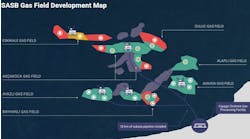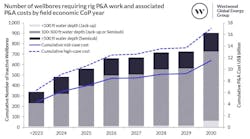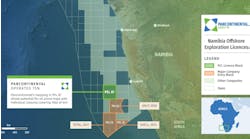Expandable technologies maximize well recovery to drive sustainability in oil and gas
By Scott Benzie and Arthur Stautzenberger, Coretrax
As calls for sustainability become ever louder, the oil and gas industry finds itself stuck between a rock and a hard place. Global energy demand remains steady, and traditional hydrocarbons show no evidence of disappearing from the energy mix, with new reports showing that up to 35% of UK energy use will still be met by fossil fuels in 2050. As a result, increasing pressure for operations to be delivered as efficiently as possible, with minimal environmental impact, is top of operator agendas.
The increased industry focus on maximizing production while reducing the associated carbon footprint has paved the way for real technological advancement, and expandable liners have emerged as a key driver in allowing operators to extend the life of existing, and often mature, fields without limiting drilling capabilities. Through utilization of infrastructure already in place, a significant sustainability reduction can also be achieved.
Additionally, unlike conventional liners or casing strings, expandable liners minimize the loss of the internal well diameter of the well casing, meaning that problematic zones can be remediated without negatively impacting production rates. This is particularly important in the case of mature wells that encounter unique challenges, such as sand ingress and formation damage. The application of the technology ultimately means operators can continue to produce from a reserve that may have been considered unviable.
Case study
This was demonstrated by Coretrax, an Expro company, during a recent project for a major Norwegian operator. Proprietary expandable technologies were deployed to enable an underproducing well to be retrofitted into a multi-lateral well to increase recovery while using existing infrastructure.
The original well design required a sidetrack from the 13-5/8” casing at a shallow depth and installing a new 10-3/4” liner. This method allowed the formation issues to be isolated, but it was increasingly challenging to reach the reservoir targets with a shallow sidetrack. Following extensive consultation with the client, Coretrax’s ReLineDL was selected to support this challenge. The tool itself is designed for open and cased hole environments, and the bottom-up expansion system uses hydraulic pressure to pump an expansion cone from the bottom of the liner to the top. The system provides the option of adding a casing string in either planned or contingency scenarios with minimum loss of wellbore diameter.
This project presented unique challenges, particularly the presence of depleted zones and shallow gas, which meant increased risk of losses or gas influx when drilling. To combat this, the operator chose to drill a small section out of the 10-3/4” casing ahead of installing an expandable liner. This allowed for the gas cap to be isolated without reducing ID, meaning both the reservoir and multi-lateral branches could be drilled with an 8-1/2” bit.
More than 502 m of liner was run in a single trip, with the inner string then stabbed in; the system itself was run until it reached the target depth of 2,144 m where cement was pumped and displaced to provide isolation. Once the cementing dart landed, hydraulic pressure was built to initiate the expansion process, and following removal of the inner string, the liner was successfully pressure tested to 2,650 psi before drilling out the shoe.
The expandable liner allowed an 8-1/2” post-expansion drift ID to be delivered, meaning that a traditional 8-1/2” main bore section could be drilled to target depth and a mainbore screen section installed. A whipstock was oriented and installed inside the expanded casing above the mainbore completion allowing it to be milled and a traditional 8-1/2” lateral section to be drilled to increase reservoir exposure. A second 8-1/2” lateral section was drilled and installed, ultimately transforming an underproducing single bore into a tri-lateral well with improved
production rates.
The project's successful delivery demonstrates advancements in expandable technologies, which allow for improved performance of traditional oil and gas wells while ensuring sustainability objectives are achieved. By ensuring operations could be continued as intended, Coretrax helped maintain the economic viability of a depleting field, reducing the need for additional wells to be drilled.





